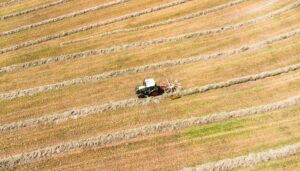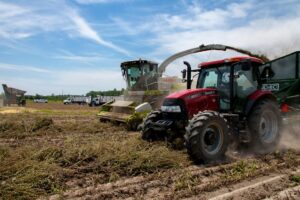Choosing the right tractor can be a game-changer for your farming or landscaping operations. Comparing Tractors With so many models, brands, and features available, finding the perfect fit can be challenging, especially for beginners. Each tractor is tailored to specific needs, from compact tractors for small gardens to heavy-duty machines for large-scale farms. In this guide, we’ll compare different types of tractors, break down their features, and help you decide which model is right for you.
Understanding Your Needs Comparing Tractors
Before diving into specific tractor models, it’s essential to assess your needs. Factors like farm size, the type of work you plan to do, and budget constraints significantly influence the choice. Here are some critical questions to ask yourself:
- What tasks will the tractor perform? Tasks like plowing, mowing, hauling, and cultivating require different types of tractors. Identifying your primary uses is a vital first step.
- What’s the size of your property? A small garden requires a different machine than a 100-acre farm. Smaller properties benefit from compact tractors, while larger farms need more horsepower and versatility.
- What’s your budget? Tractor prices vary widely, with costs ranging from $10,000 to over $100,000 depending on size, brand, and features. Don’t forget to factor in maintenance, attachments, and fuel costs.
More You need to know about Understanding Tractor Technology: A Beginner’s Guide and 14 Top Tractor Maintenance Tips Every Owner Should Know.
Types of Tractors
Understanding the different types of tractors will help you narrow down your options. Here’s a breakdown of common tractor categories and their ideal use cases:
1. Compact Tractors
Compact tractors are small, versatile machines designed for tasks on small properties, gardens, and estates. They are lightweight and highly maneuverable, making them ideal for tight spaces.
- Horsepower Range: 20–50 HP
- Best For: Mowing, landscaping, small-scale farming, and light-duty hauling.
- Popular Models:
- John Deere 1025R: Known for its easy-to-use controls and wide range of attachments.
- Kubota BX Series: Offers durability and efficiency for residential and light agricultural tasks.
2. Utility Tractors
Utility tractors are mid-sized machines designed for a wide range of general-purpose farming tasks. They strike a balance between power and versatility.
- Horsepower Range: 40–100 HP
- Best For: Plowing, tilling, hauling, and powering medium-duty implements.
- Popular Models:
- Massey Ferguson 4700 Series: Rugged and reliable for heavy-duty use.
- New Holland Workmaster Series: Affordable and feature-packed for versatile operations.
3. Row Crop Tractors
Row crop tractors are designed for precision in planting, cultivating, and harvesting crops in rows. Their adjustable wheel spacing and high ground clearance make them ideal for row farming.
- Horsepower Range: 100–300 HP
- Best For: Planting, spraying, and harvesting in row crops like corn, soybeans, and cotton.
- Popular Models:
- Case IH Magnum Series: Known for precision technology and excellent fuel efficiency.
- John Deere 8R Series: Offers advanced GPS and telematics systems for precision agriculture.
4. Sub-Compact Tractors
Smaller than compact tractors, sub-compact models are perfect for residential use and light landscaping tasks.
- Horsepower Range: 15–25 HP
- Best For: Small gardens, snow removal, and light hauling.
- Popular Models:
- Kubota BX1880: A highly affordable and efficient choice for small properties.
- Mahindra eMax Series: Sturdy and built for light-duty tasks.
5. Heavy-Duty Tractors
Heavy-duty tractors, such as articulated and four-wheel-drive models, are built for large-scale commercial farms. These machines handle the most demanding tasks with ease.
- Horsepower Range: 300+ HP
- Best For: Deep tillage, planting, and large-scale harvesting.
- Popular Models:
- John Deere 9RX Series: Superior power and advanced technology for massive operations.
- Case IH Steiger Series: Built for rugged performance in the toughest conditions.
Comparing Tractors Key Features
When comparing tractor models, it’s important to evaluate key features that impact performance, comfort, and cost. Here’s what to consider:
1. Engine Power
Horsepower is one of the most critical factors in determining a tractor’s capabilities.
- Small Farms and Gardens: 20–50 HP is sufficient.
- Medium-Sized Farms: 50–100 HP models provide enough power for most tasks.
- Large Farms: 100+ HP tractors handle heavy-duty applications like tilling large fields.
2. Transmission Types
- Manual Transmission: Offers more control but requires more skill to operate.
- Hydrostatic Transmission: User-friendly and ideal for beginners.
- Continuously Variable Transmission (CVT): Combines the best of both worlds, offering smooth and precise speed control.
3. Hydraulics and PTO
Power Take-Off (PTO) and hydraulic systems determine a tractor’s ability to power attachments.
- Standard PTO: Suitable for basic implements like mowers and sprayers.
- Live PTO: Allows you to stop the tractor without halting PTO operations, useful for complex tasks.
- Hydraulics: Essential for loaders, backhoes, and other attachments requiring lifting power.
4. Tire Options
The right tires depend on your terrain and tasks.
- Agricultural Tires: Provide excellent traction for plowing and tilling.
- Industrial Tires: Offer durability for construction and landscaping tasks.
- Turf Tires: Minimize ground damage, ideal for lawns and gardens.
5. Comfort and Ergonomics
Modern tractors prioritize operator comfort, offering features like air-conditioned cabs, adjustable seats, and intuitive controls. Ergonomic design reduces fatigue during long hours of work.
6. Technology Integration
Advanced features like GPS, telematics, and automated steering systems improve efficiency and productivity. These technologies are especially valuable for large-scale farming operations.
Brand Comparisons
Several trusted brands dominate the tractor market, each offering unique advantages. Here’s a quick comparison of top brands:
1. John Deere
- Pros: High reliability, extensive dealer network, cutting-edge technology.
- Cons: Higher price point compared to competitors.
2. Kubota
- Pros: Affordable, versatile, and fuel-efficient models.
- Cons: Limited options for heavy-duty farming tasks.
3. Case IH
- Pros: Advanced precision farming tools, durable designs.
- Cons: Can be expensive for smaller operations.
4. Mahindra
- Pros: Cost-effective, robust machines with long warranties.
- Cons: Limited high-tech features compared to competitors.
5. New Holland
- Pros: Excellent mid-range options, great fuel efficiency.
- Cons: Some models may lack advanced features.
Choosing the Right Tractor for You
Now that you understand the types of tractors, features, and brands, how do you choose the best one? Here’s a step-by-step process:
- List Your Tasks Identify the specific tasks you’ll perform regularly and prioritize features that support those needs.
- Set Your Budget Determine a budget that includes the tractor, attachments, and maintenance costs.
- Test Drive Models Visit dealers to test-drive different models. Pay attention to ease of use, comfort, and maneuverability.
- Consider Dealer Support Choose a brand with a reliable dealer network for service, repairs, and parts availability.
- Think Long-Term Invest in a model that can grow with your needs. Consider the resale value if you plan to upgrade in the future.
Conclusion
Selecting the right tractor is a crucial decision that impacts the efficiency and productivity of your operations. By understanding the various types, comparing key features, and considering trusted brands, you can confidently choose a tractor tailored to your needs. Whether you’re maintaining a small garden or running a commercial farm, the right tractor will be your trusted partner in achieving success.
Take your time, do your research, and invest wisely to find the perfect model that aligns with your goals. With the right tractor, the possibilities are endless!



